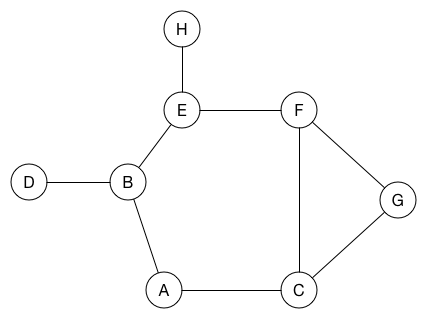Breadth First Traversal (or Search)
Breadth First Traversal (or Search) for a graph is similar to Breadth First Traversal of a tree. The only catch here is, unlike trees, graphs may contain cycles, so we may come to the same node again. To avoid processing a node more than once, we use a boolean visited array.
For simplicity, it is assumed that all vertices are reachable from the starting vertex.

BFS (G, s) // Where G is the graph and s is the root node
// 1. Inserting s in queue until all its neighbour vertices are marked.
let Q be queue.
Q.enqueue( s )
// 2. Mark
To mark s as visited.
// 3. Start traversing
while ( Q is not empty)
//Removing that vertex from queue,whose neighbour will be visited now
v = Q.dequeue( )
//processing all the neighbours of v
for all neighbours w of v in Graph G
if w is not visited
Q.enqueue( w ) //Stores w in Q to further visit its neighbour
mark w as visited.
void BFS(vector<list<int>> &adjList, int v) {
auto size = adjList.size();
vector<bool> visited(size, 0);
queue<int> q;
q.push(v);
visited[v] = true;
path[v] = 0;
while (!q.empty()) {
int n = q.front();
q.pop();
for (auto neighbor: adjList[n]) {
if (visited[neighbor] == false) {
q.push(neighbor);
}
}
visited[n] = true;
}
}